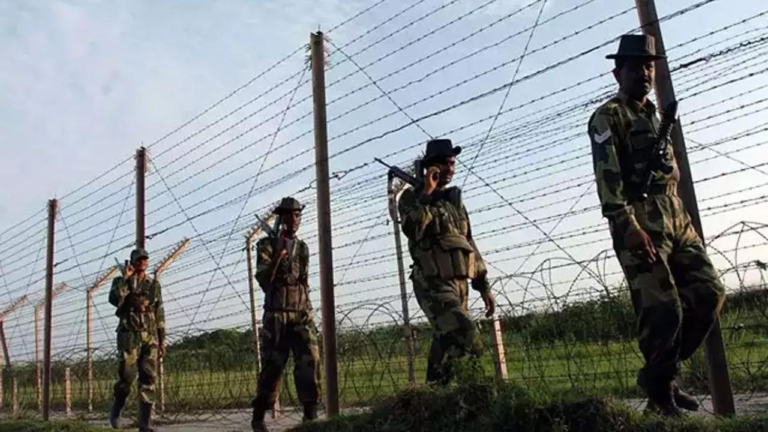
[ad_1]
The decision was announced by Union home minister Amit Shah on Thursday as part of the government’s efforts to secure the country’s borders and maintain the demographic structure of the northeastern states that share a 1,643-km-long boundary with Myanmar
“It is Prime Minister Shri @narendramodi Ji’s resolve to secure our borders.The Ministry of Home Affairs (MHA) has decided that the Free Movement Regime (FMR) between India and Myanmar be scrapped to ensure the internal security of the country and to maintain the demographic structure of India’s North Eastern States bordering Myanmar,” Shah said on X.
Manipur CM N Biren Singh took to X to thank PM Modi and Union home minister Amit Shah for scrapping the India-Myanmar Free Movement Regime (FMR) and for their commitment to secure the border.
“Immensely grateful to Hon’ble PM Shri Narendra Modi Ji and Hon’ble HM Shri Amit Shah Ji for their commitment to securing our borders. The decision to scrap the FMR between India and Myanmar, as recommended by the minister of home affairs, India, is crucial for our internal security and the demographic integrity of our North Eastern States,” the Manipur CM said.
What is Free Movement Regime (FMR)
The 1,643-km border shared by India and Myanmar stretches across four states — Mizoram, Manipur, Nagaland, and Arunachal Pradesh. The Free Movement Regime (FMR) is an agreement reached by both nations, permitting tribes residing along this border to venture as far as 16 km into the neighboring country without the need for a visa.
As per the FMR, any hill tribe member who is a national of either India or Myanmar and lives within a 16 km radius from the border is allowed to enter the other country upon showing a border pass valid for one year, with the allowance to remain there for up to two weeks per visit.
Introduced in 2018, the FMR was a key component of the Modi administration’s Act East policy.
Here are some of the reasons and implications of this move:
Security concerns:
The primary rationale behind this decision is to bolster India’s internal security. The porous border facilitated not only cultural exchange but also became a conduit for illegal activities, including the smuggling of narcotics and the movement of insurgents. Groups in Manipur have long voiced concerns over the ease with which militants could cross the border, exacerbating security challenges in the region.
Demographic structure:
Amit Shah highlighted the need to maintain the demographic structure of the northeastern states bordering Myanmar. There’s an implicit concern about unregulated migration and its potential to alter the demographic balance in these sensitive regions. The influx of refugees following the military coup in Myanmar on February 1, 2021, particularly into Mizoram and Manipur, underscores these apprehensions.
Ethnic violence and political stability:
The backdrop of ethnic violence in Manipur, where clashes between the Meitei and Kuki communities have resulted in significant loss of life, further presses the need for stringent border controls. By controlling movement across the border, the government aims to prevent further inflow of arms or insurgents that could fuel the conflict.
Fencing along the Myanmar border
The decision to scrap FMR came two days after Amit Shah said India has decided to fence the entire 1,643-km-long India-Myanmar border.
The call for fencing has been particularly strong among the Meitei groups in the Imphal valley, who argue that the porous nature of the border allows tribal militants to infiltrate India easily. These groups have also raised alarms over the smuggling of narcotics, exploiting the lack of a physical barrier along the international border.
To address these concerns, the Indian government plans not only to construct a comprehensive fence along the Indo-Myanmar border but also to establish a patrol track adjacent to it, aiming to enhance surveillance capabilities. This initiative is complemented by the launch of two pilot fencing projects employing a hybrid surveillance system, which underscores the government’s commitment to leveraging technology for border security.
“These projects will fence a one-kilometer stretch each in Arunachal Pradesh and Manipur. Moreover, an additional 20 kilometers of fencing in Manipur have received approval, with work set to commence shortly,” Shah noted, highlighting the proactive steps being taken to secure the border.
Despite the extensive border shared with Myanmar, only about 10 kilometers of it in Manipur have been fenced to date, out of the roughly 390 kilometers of border the state shares with Myanmar. This minimal coverage underscores the urgent need for the comprehensive fencing initiative announced by the government.
(With inputs from agencies)
[ad_2]
Source link
